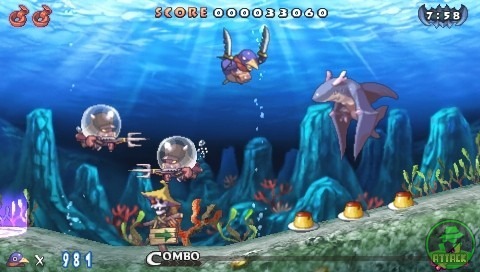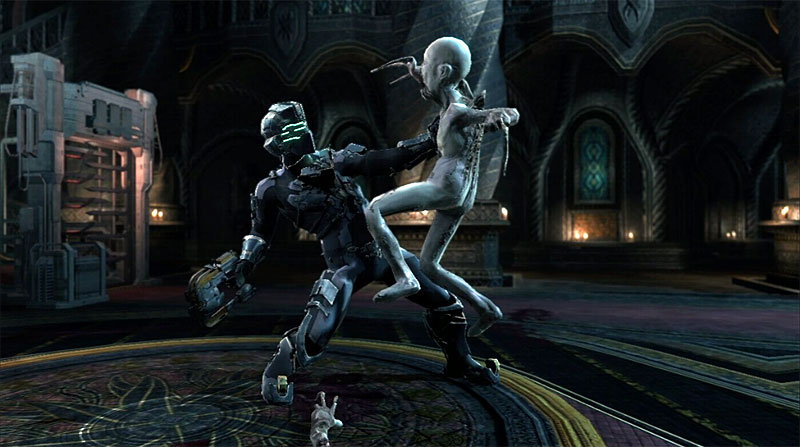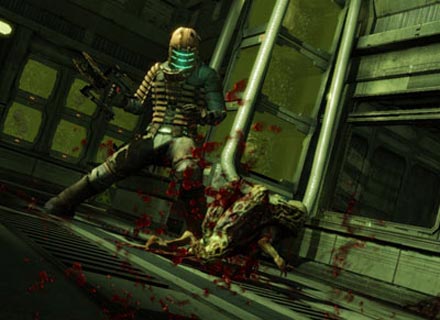Welcome to the Kingdom Hearts Birth By Sleep Review by Japanese Game Source. There’s a small change from the last review this time around. From now on, games on Japanese Game Source will be reviewed based on 7 categories; graphics, music or sound, gameplay, growth system or customization, pacing, continuing playability or replayability, and story, though not necessarily in that order. If a particular genre of game doesn’t have one of these elements, something else will be chosen to maintain the total number of 7 categories. Each category gets rated from 0 to 10 with one decimal place. The percentage is then directly calculated from these scores, again, to one decimal place. Also, one final note, the story section will never have any spoilers in it. And, of course, there will always be a separate score for how import friendly a game is. Now that the boring stuff is out of the way, it’s time for the actual review!
Graphics

Considering that this is on a handheld console, there are very few faults to be found in the graphics. In many ways, the graphics in Kingdom Hearts Birth By Sleep was practically equal to the graphical quality of the PS2 entries in the series. In fact, it felt as though I was playing a PS2 game visually. The textures were as sharp as they can be given the lower resolution of the console. However, while very few scenes looked at all awkward, there are a small handful of cutscenes in which a polygon or two seems out of place, usually in the shoulder area of one of the characters. Aqua seemed to have this problem most often, but even then, it was 2, maybe 3 times throughout the entire game. This seemed to be the only flaw in the graphics throughout the entire game.
Graphics Score: 9.6
Music

The quality of the music is superb. Everything sounds crisp and clear, especially through headphones. Even the footsteps of the characters seem to have real presence auditorially. Most of the levels have new music, and most of it is pleasing to the ears. You may personally dislike the music for a world or two, but it is all high quality. However, some points are lost for the lack of originality. The opening theme song is the exact same song as the first Kingdom Hearts. A couple other worlds, namely Olympus Coliseum and Radiant Gardens, have recycled music as well. It makes more sense in those cases since the feel of the world should be consistent between games, but a noticeable tweaking of the music would be more appreciated.
Music Score: 9.3
Story
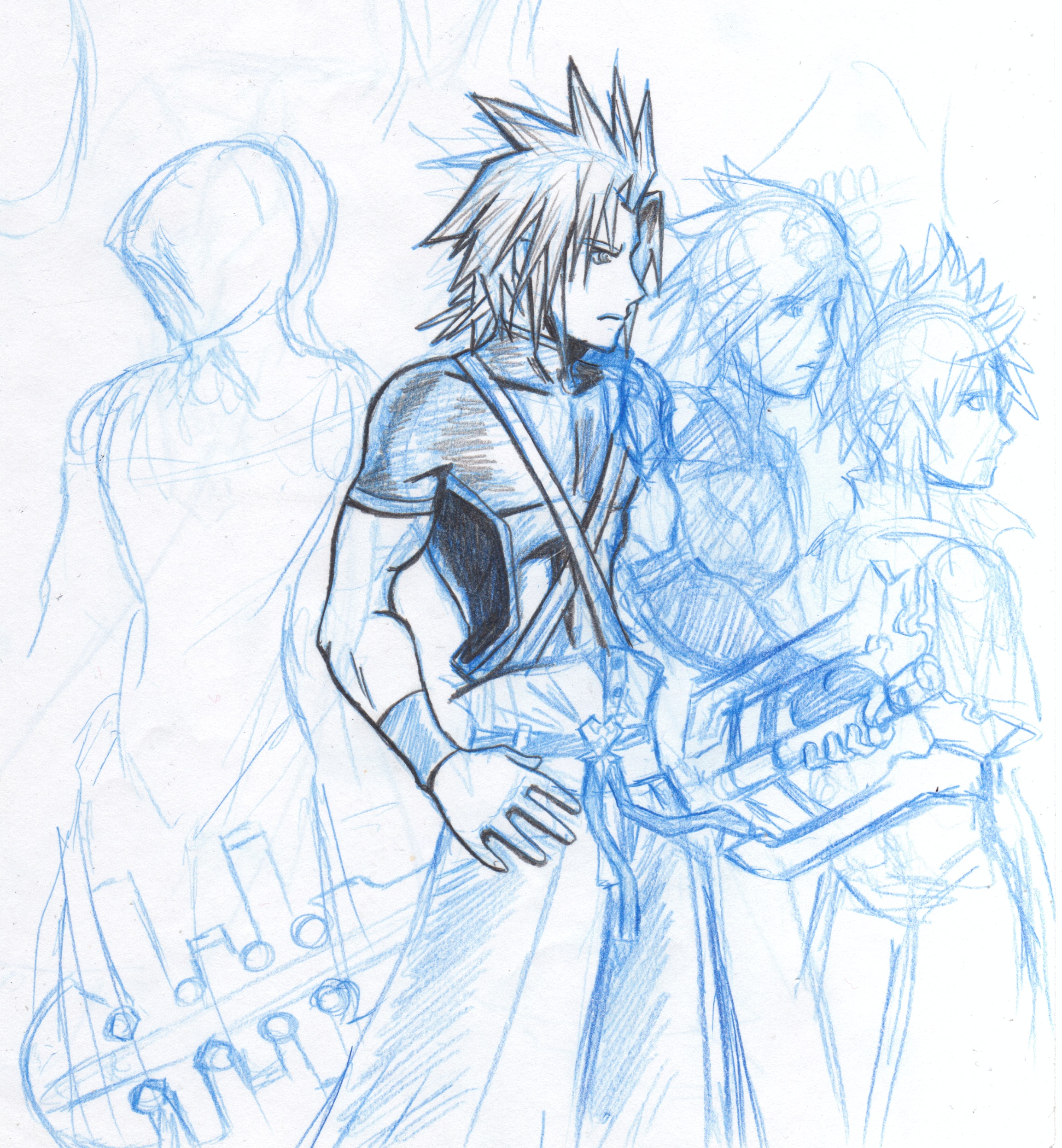
Much as the rest of Birth By Sleep, the story is of high quality. There are enough twists and turns to keep you interested, especially since it was split into the individual viewpoints of three individuals instead of a straight story from the perspective of one person or one group. This allowed for several “Aha!” moments throughout the story, which made the story very enjoyable. The normal endings for each of the three characters have their own revelations, making it well worth playing through all three characters. There is no real preferred order of playing through them, either. Any order is good. However, it should be noted that Terra’s story has the biggest revelation between the three of them, so depending on your personality, you might want to play him either first or last.
The biggest revelations for the entire story, however, are found in the secret ending, which is actually playable this time around (as opposed to being just a video). It is well worth the time and effort to unlock the secret ending. Unlocking the secret ending takes more work if you play on an easier setting, and is actually impossible to unlock on the easiest setting, so you may want to take that into account when you pick your difficulty level.
All in all, the story entertains and keeps you engaged in the game. As a standalone game, the story is not that complex. However, when tied to aspects of the other games, the story feels very grand and expansive. This is both good and bad. This means that those who haven’t played the other games won’t be overwhelmed by the story in this one, and those that have are really treated. However, it also means that the story in this particular game isn’t as strong as other entries in the series, which have been known to be fairly grand and expansive all on their own.
Story Score: 9.5
Gameplay

This is undoubtedly the highlight of the game. The gameplay is fast, fun, and addictive. It is very reminiscent of the gameplay of Kingdom Hearts II, but with some key (and enjoyable) differences. You equip special attacks called “Deck Commands” that you pick up and create throughout the game. Pressing up and down on the D-pad changes the selected Deck Command, and pressing triangle performs that command. Since you control which commands are equipped, you can change how you fight. Circle does normal attacks and opens chests and the like when applicable. X jumps, and square performs moves like Dodge or Guard. It is extremely easy system to use, and it keeps the fights fresh and exciting all the way through the game.
There are two more aspects to the gameplay, however. The first is “Finishers”. There is a special “Command Gauge” that fills when you successfully hit an opponent. When it fills all the way up, the next attack you perform by hitting circle will be a powerful Finisher attack. The last aspect is “Command Styles”. If you get that Command Gauge to full by using the right Deck Commands, you will change Styles. This is where the fighting can get really exciting. Each character has Styles and Finishers that only they can perform. Ven, for example, is the only one that can use the Command Style “Wing Blade”, as seen below:
This system is fast, easy, fun, exciting, and is always changing. It’s hard to ask for much more from an action RPG.
But, there is one MORE aspect to the gameplay. It doesn’t involve the fighting at all. In fact, it’s completely optional, which is good, because it tends to be a little on the boring side. It’s called the Command Board. Rather than explain the entire thing here, I have a translated video for you to watch. This will serve two purposes, one is showing you the minigame, the other is to show you how boring it is when compared to the much more exciting fighting gameplay. Now, that doesn’t mean that it’s actually boring, just boring by comparison… well, just watch:
Growth System

This growth system is unlike any other I have seen in many ways, and exactly like others I have seen in many ways. First, the traditional experience to gain levels is in full effect here. Your character gains experience every time he or she kills an Unversed, and enough experience gains that character a level, which increases a series of stats by a predetermined amount based on the level and the character. Very straightforward. However, there is a whole different layer to it. Your individual moves (Deck Commands) can be leveled as well. Yes, they simply gain experience when you defeat an enemy as long as the Deck Command is currently equipped, and a certain amount of experience levels them. But, you can then combine the leveled Deck Commands into entirely new Deck Commands. The result is that you are constantly upgrading your moveset in unique and interesting ways. This is especially good for a handheld, because you can play for 10 or 15 minutes and make significant progress in your growth by leveling a Deck Command in that amount of time (or several, if you’re lucky). You can even level up your Deck Commands, as well as get new ones, by playing the Command Board minigame.
That’s not the only benefit of leveling your Deck Commands, though. When you combine Deck Commands, you have the option of using a special item that will attach an ability to the newly created Deck Command like Combo Up, which increases your max combo for normal attacks, Fire Up, which increases how much damage your fire based attacks do, or Leaf Veil, which makes it so that you can’t be hit in the middle of a Cure. If you then level this new Deck Command to it’s highest level (anywhere from 3 to 5, depending on the command), you can then continue to use that ability without equipping that command. This gives you a lot of reasons to experiment.
And then there’s the icing on the cake. Your Finishers can also be improved. When you have one Finisher equipped, other Finishers, based on a hierarchical Finisher tree, will gain experience from specific actions (usually involving performing Finishers). If you fill up a Finisher’s experience points, that Finisher is unlocked, giving you even more options in battle.
The only flaw in this growth system is that it’s a lot to keep track of. There will be times when you spend 5 or 10 minutes just combining and equipping different Deck Commands to see what you can get, and that process can start to get cumbersome. In the end, though, it is all worth it.
Growth System Score: 9.7
Pacing
The pacing in this game is excellent (you might see a theme here by now). The story moves along at a brisk (but not rushed) pace. You consistently feel like your making progress in the growth system. There’s really not much to fault here. With each character taking between 10 and 15 hours to beat, depending on how much you rush yourself, there never seems to be a completely dull moment. There’s even a good amount of exploration going on, even though it’s all a little faked. The story progression is almost completely linear, and you must “go here” and “do that” to progress through the story, but you don’t always have to do it right away. There are occasionally branching paths (that go out for more than just a few feet) that will allow you to explore. And since they game gives you a pat on the back for finding all of the treasures in the game, there is some incentive to explore as well.
The pacing only feels like it starts to fall apart after you’ve played all the way through with 2 of the characters, and you’re playing through with the third. Since you’ll likely know the Disney stories, and you’ve seen two thirds of those stories in the game already, you’ll be able to guess fairly well what happens with the last character, and it can make the progression feel a little more sluggish. The game counters this by having a number of smaller revelations throughout the game, which helps keep your mind occupied on things like “oh, so while he was there, she was there!” or “so that’s why she said he did that!”. It’s not perfect, but it’s getting pretty close to it.
One other problem that effects the pacing is the loading times. They are rather long (as you can probably see in the opening video on this page). They are not so long that they destroy the game… IF you do a full install. It cuts down the load times a lot, and it is worth it.
Pacing Score: 9.6
Continuing Playability
Is there a reason to continue playing after you’ve beaten the game with all three characters? Yes. To unlock and beat the secret ending, and unlock the final secret video. Depending on the difficulty level you chose and how thorough you were in playing through the game, this could lead to a 50% increase in total gameplay time by itself… or it could be done in a couple of hours. Once you’ve done this, there’s little incentive to go back and continue playing unless you really are just one of those people that has to really complete a game to be satisfied. The unfortunate thing is, completing absolutely everything in the game does nothing more than put a little stamp in your journal under each category to signify that you’ve done everything. The one redeeming factor is that there is a secret boss to beat, and a rather hard one at that. For many people, a real challenge (instead of “collect everything”) is a much better reason to keep playing. This secret boss does give that challenge, and it will take you a significant amount of time to become powerful enough to beat this boss. So, there are little things here and there to keep you playing after the ending(s), but nothing truly extraordinary.
Continuing Playability Score: 8.7
Review Summary:
Graphics Score: 9.6
Music Score: 9.3
Story Score: 9.5
Gameplay Score: 9.9
Growth System Score: 9.7
Pacing Score: 9.6
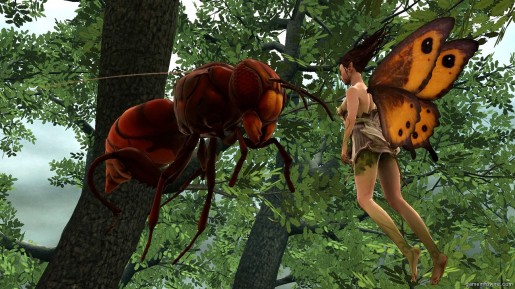 The turn-based style of RPG gameplay may deter some gamers that want pure action but the way that it’s done in this game will please long-terms fans of the RPG genre. There are no random battles in this game nor are there huge dungeons for you to explore to level-up for hours on end. Almost every battle you encounter is there for a purpose. If a character tells you there’s some trolls hassling him you’ll go there to intervene. Every fight in this game has a meaning, which is rare in the gaming industry as most games have you shooting or beating up everything in sight. Better still, you can even make choices sometimes whether you can solve your problems in a non-violent way. This varied the gameplay and I applaud Spiders (the game’s developer) for making a game where you can solve your problems without the use of violence.
The turn-based style of RPG gameplay may deter some gamers that want pure action but the way that it’s done in this game will please long-terms fans of the RPG genre. There are no random battles in this game nor are there huge dungeons for you to explore to level-up for hours on end. Almost every battle you encounter is there for a purpose. If a character tells you there’s some trolls hassling him you’ll go there to intervene. Every fight in this game has a meaning, which is rare in the gaming industry as most games have you shooting or beating up everything in sight. Better still, you can even make choices sometimes whether you can solve your problems in a non-violent way. This varied the gameplay and I applaud Spiders (the game’s developer) for making a game where you can solve your problems without the use of violence.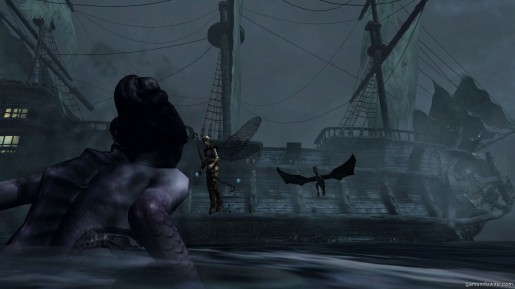 No voice acting
No voice acting
























